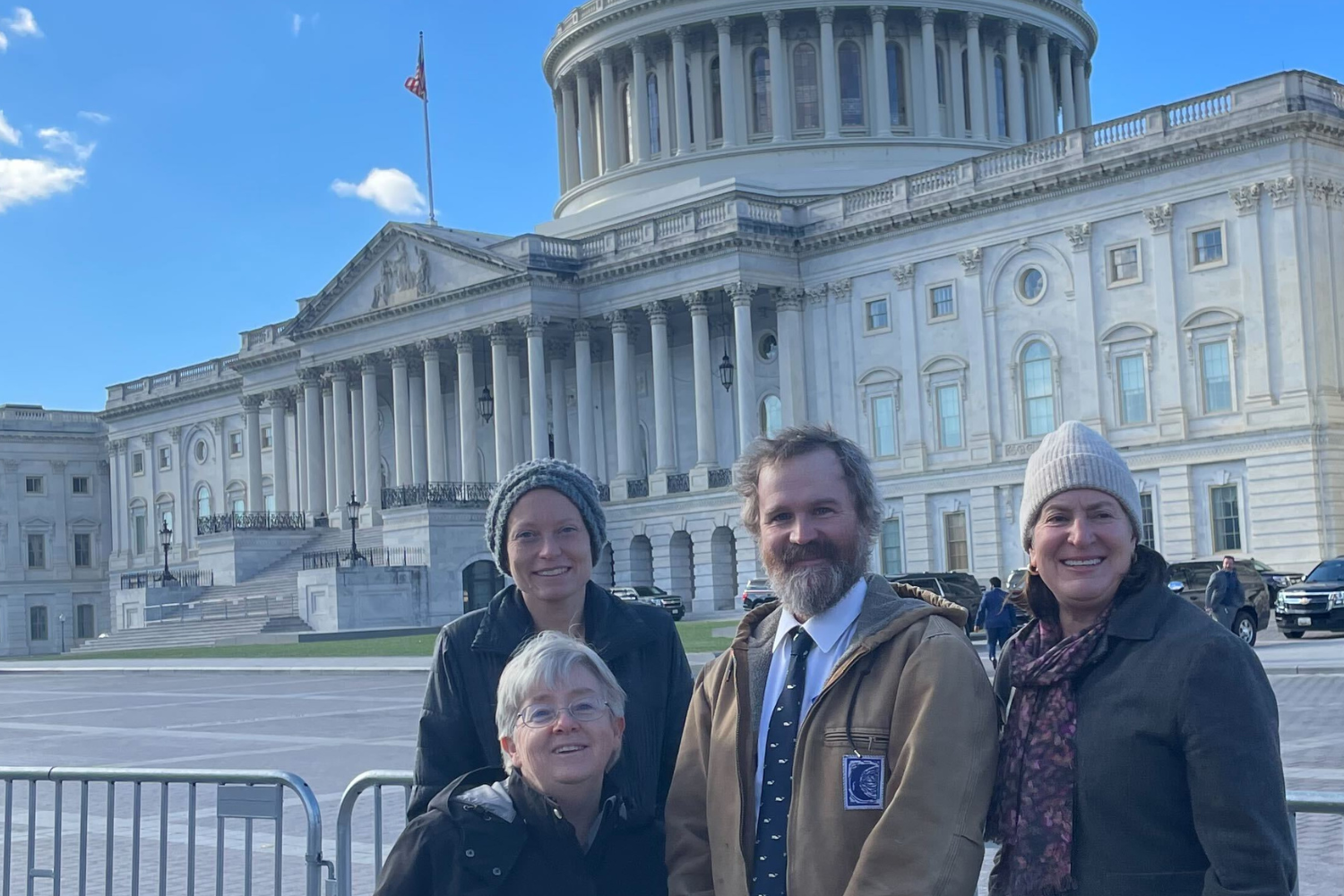As Congress punts the Farm Bill to next year, US agriculture policy faces uncertainty, but also an opportunity to support farming practices that enhance resilience and deliver critical environmental benefits. Yet, too often, policy conversations in Washington, DC are detached from the realities of the fields or forests where these policies are implemented. Last week, Carbon180 brought four producers from the Upper Midwest to DC to share their firsthand experiences of the challenges and opportunities for agroforestry, particularly on marginal lands.
Marginal lands are any land that is considered to have lesser value for conventional agricultural production, like degraded soils or field edges. Agroforestry, the intentional integration of trees and shrubs into crop and livestock operations, can transform marginal land into productive ecosystems, boosting environmental resilience and delivering durable carbon sequestration through trees and shrubs. Coming from agricultural regions known for corn and soy row crop production, the producers that came to DC offered a unique on-the-ground perspective of the benefits, challenges, and opportunities of implementing these agroforestry systems and practices. This blog recaps how these producers brought their expertise to DC, meeting with policymakers to advocate for stronger policy support for agroforestry.

Talking agroforestry on Capitol Hill
During the fly-in, the agroforestry practitioners sat on a panel for Hill staffers hosted by the bipartisan House Climate Solutions Caucus. In addition to the roundtable, we packed two days full of meetings with Congressional offices representing districts and states where the practitioners’ operations are located. We also had meetings with Agriculture Committee staff for both the House and the Senate.
Across all interactions with Congressional staffers, producers shared how cultivating diverse, integrated agroforestry systems can significantly enhance their resilience to increasingly extreme weather. In the panel, Nate, of Nightfall Farms in Indiana, emphasized the critical role of tree shade in helping both his animals and himself endure high-heat days. Building on this point, Emily of Greenfield Grazing in Michigan, highlighted the additional benefits of agroforestry systems, such as improved animal welfare, disease management, and enhanced soil health. Elana, a chestnut farmer from Iowa, added that maintaining living root systems is essential for stabilizing highly erodible land, reinforcing its resilience against environmental degradation.

Despite these clear conservation benefits, producers noted that federal policy does not appropriately incentivize agroforestry systems. During discussions, staffers raised questions about the barriers to implementing agroforestry practices. Kathy, a wildlife biologist turned agroforestry expert in Iowa explained how her farm’s innovative approach has evolved outside of traditional USDA programs and that experimentation has been critical to achieving their current success. Nate pointed out that land access remains a significant obstacle, particularly for those who do not inherit farmland. Additional challenges include a lack of research and technical assistance, as well as the high upfront costs of transitioning to agroforestry systems.
Meetings with USDA
In addition to meeting with lawmakers, practitioners engaged with key USDA divisions, including the Farm Service Agency (FSA) and the Natural Resources Conservation Service (NRCS), to discuss the future of agroforestry.
Producers highlighted the lack of technical assistance for agroforestry at local NRCS offices, a significant barrier for those seeking guidance and support through federal conservation programs. The meeting included a diverse group of NRCS staff, such as experts in soil health, climate resilience, and agroforestry, who acknowledged these concerns and highlighted ongoing efforts to address them. They shared updates about renewed internal training initiatives designed to bolster expertise in agroforestry and related practices. Additionally, NRCS encouraged producers to engage more actively by participating in their state technical committees and local working groups, emphasizing that producer input is vital for shaping effective support systems and policies.
During the FSA meeting, Nate shared his experience with using the Conservation Reserve Program (CRP) to establish grasslands for an eventual silvopasture system. While he emphasized that the support from CRP was invaluable, he noted that being allowed to graze the enrolled acres could have helped manage invasive species and tree pressure more effectively. FSA staff were actively engaged, inquiring about the environmental benefits of agroforestry on highly erodible lands. Practitioners highlighted advantages such as reduced soil erosion, increased biodiversity, and the provision of food for wildlife with early, non-commercial harvests from trees and shrubs. Additionally, they underscored the need for streamlined enrollment processes in federal conservation programs, citing the significant time and paperwork requirements as major barriers to access.
Policy landscape moving forward
With legislative days dwindling, Congress’s to-do list is packed and lawmakers will need to focus on passing an extension for the Farm Bill, in addition to a stopgap measure for government funding. The current proposals from the Senate and House Agriculture Committee leadership include several bipartisan agroforestry provisions. Carbon180 has championed a legislative proposal that would create a new Agroforestry Initiative in the CRP that incentivizes enrollment of marginal lands dedicated to agroforestry. This initiative would authorize non-emergency harvesting and grazing without penalty as long as conservation outcomes are maintained, providing producers with an additional revenue stream while they wait for high-value tree crops to reach maturity. We were pleased that some components of this proposal were included in pilot form in Chairwoman Stabenow’s Farm Bill draft. However, a higher acreage cap and broader geographic scope than what is currently included could go a long way in supporting efforts to scale agroforestry.
The discussions producers had in DC last week underscored the transformative potential of agroforestry to address agricultural production, conservation, and climate challenges. For policymakers, the call to action is clear: robust support for agroforestry through targeted programs and funding can empower producers to adopt practices that enhance operational resilience, boost economic opportunities, and deliver critical conservation and climate benefits.

Edited by Ana Little-Saña. Images by Carbon180.

